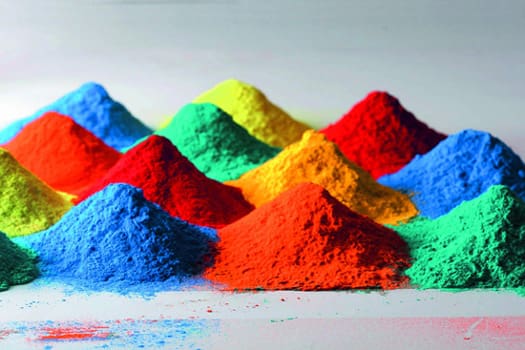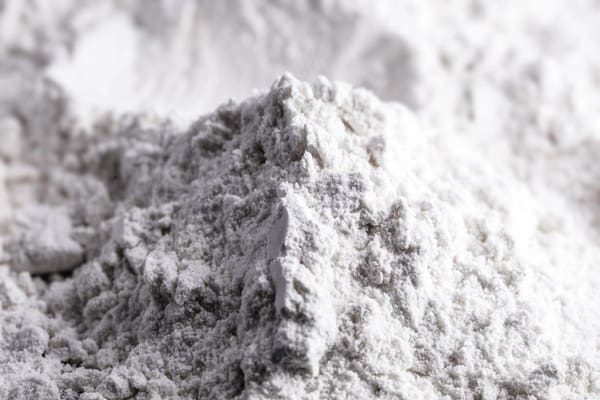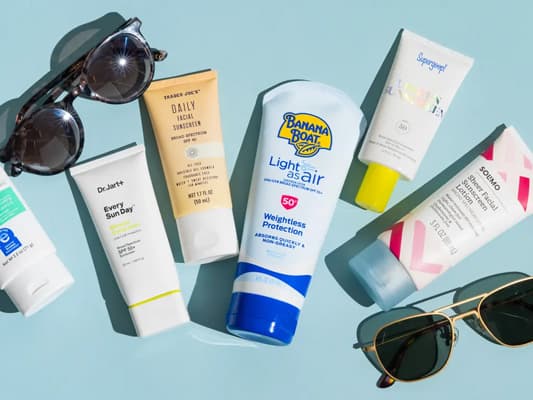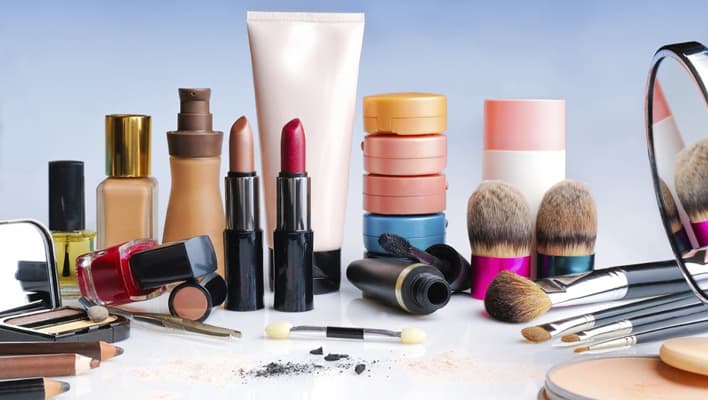Titanium Dioxide, commonly known as TiO2, is an incredibly beneficial and prevalent substance of crucial value to several industries worldwide. This naturally occurring oxide of titanium is renowned for its exceptional brightness, whiteness, and opacity, making it instrumental in the production of coatings, paints, plastics, and cosmetics. The titanium dioxide formula consists of one titanium atom bonded with two oxygen atoms, written chemically as TiO2. The compound is not only significant due to its coloring properties but also for its versatile applications in the medical, environmental technology, and UV protection industries. Despite its widespread use, the question “Is titanium dioxide safe?” remains a significant public and scientific concern, especially when present in nanoparticle forms, which have potential health and environmental implications. This comprehensive article provides a detailed overview of what titanium dioxide is, its chemical composition, various forms (types of titanium dioxide), main applications (titanium dioxide uses), how titanium dioxide is made (TiO2 production), and current safety concerns.
TiO2 grades
What is Titanium Dioxide (TiO2)? Definition and Basic Properties
Titanium Dioxide (TiO2), also known by its chemical name Titanium(IV) oxide, titania, or simply titanium oxide, is a naturally occurring oxide of titanium, a transition metal found in the Earth’s crust. Its chemical composition is simple: it’s made from one titanium atom (Ti) with two oxygen atoms (O) attached, forming the stable compound TiO2. This simplicity is reflected in its clear titanium dioxide chemical formula, TiO2.
As a fine white powder, dioxide titanium possesses a remarkably high refractive index (higher than diamond!), making it an exceptionally effective agent for scattering visible light. This unique property is the secret behind its unparalleled ability to impart brightness, whiteness, and opacity to a wide array of materials. Beyond its optical brilliance, TiO2 is extremely resistant to corrosion, chemically inert, and thermally stable, which are among the many reasons why it finds wide application. The titanium dioxide boiling point is incredibly high at 2,972 °C (5,382 °F), further underscoring its stability.
Titanium Dioxide primarily exists in three naturally occurring crystalline forms or types: rutile, anatase, and brookite. Each possesses unique physical properties and applications, determined by their distinct titanium dioxide structure at the atomic level. Rutile is the most common and thermodynamically stable form, and it is predominantly applied for pigments due to its superior light-scattering efficiency. Anatase, while less stable, is notable for its higher photocatalytic activity, making it valuable in self-cleaning surfaces and air purification. Brookite is rarely used commercially. The physical character of TiO2, including its very white appearance, renders it indispensable in applications calling for intense whiteness and opacity.
| Chemical formula | TiO2 |
|---|---|
| Also known as | Titanium(IV) oxide, titania, titanium white, Pigment White 6, CI 77891 |
| Appearance | White solid, insoluble in water |
| Applications | Paint, sunscreen, food coloring |
| E number as a food coloring | E171 |
This overview defines titanium dioxide as a multifaceted compound.
The Two Main Types of Titanium Dioxide: Pigment-Grade and Ultrafine-Grade
While titanium dioxide exists in different crystalline forms, industrially it is broadly classified into two main types based on particle size and intended application: pigment-grade and ultrafine-grade (nanoscale). Each type of titanium dioxide is optimized for specific properties.
Pigment-grade Titanium Dioxide:
Pigment-grade Titanium Dioxide accounts for more than 98% of global TiO2 production. It is specifically engineered with a particle size (typically 200-350 nanometers) optimized to scatter visible light most effectively. This leads to its superior brightness, opacity, and ability to whiten and lighten other colors.
Pigment-grade TiO2 is primarily used in:
- Paints and Coatings: Its addition provides unparalleled opacity, hiding power, brightness, and durability, enhancing the lifespan and appearance of paint and coatings by protecting them from UV degradation. It is the core of Titanium white pigment.
- Plastics, Adhesives, and Rubber: Used to impart whiteness, opacity, and crucially, for light stability improvement, preventing cracking, chalking, and fading in outdoor or UV-exposed products.
- Cosmetics and Personal Care: In larger particle forms, pigment-grade TiO2 is utilized to whiten skin, provide coverage for blemishes, and add opacity to makeup (e.g., foundations, powders).
- Paper Coatings: Added to paper to increase brightness, opacity, and print quality.
- Foodstuffs: Used as a white coloring agent (E171) to achieve consistent color and protect against degradation.
- Pharmaceuticals: Utilized for coating tablets and capsules to protect active ingredients from light and moisture, and to improve cosmetic appearance.

Ultrafine-grade (Nanoscale) Titanium Dioxide:
Ultrafine-grade Titanium Dioxide is produced with a very small particle size (typically 1-100 nanometers), giving it unique properties distinct from pigment-grade. While still absorbing UV light, its small size means it scatters visible light much less, leading to transparency.
This grade of titanium dioxide for skin is used primarily in:
- Cosmetic Sunscreens: It serves as a clear UV absorber and physical blocker that protects skin from harmful UVA and UVB radiation without leaving the visible white residue often associated with traditional sunblocks. It physically absorbs UV radiation rather than merely reflecting it, making it highly effective for broad-spectrum sun protection.
- Catalyst Support Material: In industrial applications, ultrafine TiO2 is used as a highly active catalyst support.This includes its use in the automotive industry for the abatement of exhaust emissions (e.g., in catalytic converters) and in power plants for the removal of nitrous oxide (NOx) emissions, leveraging its photocatalytic properties.
- Self-Cleaning Surfaces: Its photocatalytic activity can break down organic pollutants when exposed to light, leading to self-cleaning windows and tiles.These two titanium dioxide types highlight the versatility of what is in titanium dioxide and its applications.

How Titanium Dioxide Is Made: TiO2 Production Processes
Titanium Dioxide is primarily produced from naturally occurring titanium minerals. The main mineral feedstock for TiO2 production is ilmenite (FeTiO3), which is a titanium-iron oxide mineral, or less commonly, purer rutile mineral deposits. The process involves the extraction of titanium from these ores using industrial methods that separate the titanium content and purify it to the desired TiO2 form. This explains is titanium dioxide natural or synthetic – it’s derived from natural minerals but undergoes synthetic processing.

Two major industrial processes are widely applied to produce Titanium Dioxide: the chloride process and the sulfate process.
-
The Chloride Process:
- This process typically uses higher-grade ilmenite ore or natural rutile.
- The ore is treated at high temperatures with chlorine gas and carbon (coke) in a fluidized bed reactor to produce titanium tetrachloride (TiCl4), a volatile liquid.
- The TiCl4 is then highly purified through distillation, removing impurities like iron chlorides.
- Finally, the purified titanium tetrachloride is reacted with oxygen (or air) at very high temperatures in a specialized reactor to oxidize it back into titanium dioxide particles and regenerate chlorine.
- This process predominantly yields titanium dioxide in its rutile form, which is preferred for most pigment applications due to its superior light-scattering properties. The generated chlorine can be recycled within the process, making it more environmentally contained.
2. The Sulfate Process:
- This process can utilize lower-grade ilmenite ores.
- The ilmenite ore is digested with concentrated sulfuric acid (H2SO4), which decomposes the mineral to produce soluble titanium sulfates and iron sulfates.
- The solution is then filtered, and iron impurities are removed.
- The titanium sulfate solution is hydrolyzed to precipitate hydrated titanium dioxide.
- This precipitate is then washed, filtered, and calcined (heated to high temperatures) to remove water and crystallize the TiO2.
- The sulfate process can be controlled to produce titanium dioxide in either the anatase form (typically for photocatalytic applications) or the rutile form (with further treatment). It is generally considered a more energy-intensive process and produces more waste byproducts compared to the chloride process.
Both processes are beneficial depending on the desired form and purity of the titanium dioxide, as well as the feedstock availability. Other feedstocks used in the manufacturing of Titanium Dioxide include upgraded slag, which is a byproduct of the steel industry and contains high titanium levels. The use of such byproducts enhances the sustainability and efficiency of titanium dioxide manufacturing. The global production of titanium dioxide is massive, with millions of tons produced annually to supply industries such as coatings, plastics, and cosmetics. Key manufacturers of TiO2 like Chemours, Tronox, and Huntsman dominate the global supply market. Patent activity concerning the manufacture of titanium dioxide is highly competitive, involving numerous innovations relating to the optimization of production processes efficiency, quality enhancement of TiO2, and development of new uses. Companies continuously work to protect their intellectual property to gain a competitive edge in the global market.
Uses of Titanium Dioxide: Industrial and Consumer Applications
Titanium Dioxide (TiO2) is arguably the most versatile of all inorganic compounds, with applications across nearly every industry due to its unparalleled properties. This section details what titanium dioxide is used for in various sectors.
Titanium White Pigment Applications
Perhaps most famously, TiO2 is used as the quintessential Titanium white pigment, contributing unmatched brightness, whiteness, and opacity.
- Paints and Coatings: As a pigment in titanium dioxide paint and coatings, TiO2 adds exceptional hiding power, opacity, and color retention to products. Its presence ensures brilliant, long-lasting colors and protects substrates from UV degradation, thereby enhancing durability and extending life. It’s the most widely used white pigment in the world.
- Plastics: When utilized in plastics, TiO2 serves to impart whiteness, opacity, and, crucially, to protect from UV rays, which prevents polymer degradation, maintaining product integrity by avoiding fading, cracking, and brittleness. This ensures the longevity of plastic products.
- Paper: In the production of paper, TiO2 is added as a filler and coating pigment to increase whiteness, opacity, and improve the quality of printed items by enhancing ink receptivity.
- Ceramics and Construction Materials: TiO2 is found in ceramics, glazes, and enamels for its opacifying and whitening effects, and in construction materials like concrete and cement, where it contributes to strength, durability, and can even offer photocatalytic self-cleaning properties.
- Printing Inks: TiO2 finds extensive application in printing inks because of its high quality as a pigment, allowing it to generate very high-quality, opaque, and bright prints.
The titanium dioxide use demand is heavy across the world, with the majority of demand coming from the paint and coatings sector, followed by the plastics and paper sectors. TiO2 is often chosen instead of alternatives due to its superior light-scattering properties, non-toxicity (in pigment-grade form), and inherent stability, making it a consistent preferred choice in most applications.



Titanium Dioxide in Food (E171) and Cosmetics
Beyond industrial uses, Titanium Dioxide is also commonly present in various consumer products, particularly in cosmetics and food items.
- Food Additive: The titanium dioxide colour (E171) is used as a whitening and opacifying coloring agent in a wide range of food items such as confectionery (candies, chewing gum), bakery items (icings, glazes), sauces, dairy products, and supplements. It ensures a consistent, visually appealing bright white appearance, making products more attractive to consumers.
- Cosmetics and Make-up: In cosmetics and make-up, TiO2 is used for its characteristic covering power and opacity to cover imperfections and to even out skin tone, acting as a white pigment in foundations, powders, and lipsticks. It is particularly popular in dermatology for its non-irritancy.
- Sunscreens: TiO2 is a key active ingredient in mineral sunscreens. Its ability to reflect and absorb UV light has earned its popularity for effective, broad-spectrum UV protection. It acts as a physical barrier against UV radiation without significant absorption into the skin, making it a preferred choice for sensitive skin formulations. This directly addresses the question “is titanium dioxide safe in makeup” when applied topically.
- Pharmaceuticals: Titanium dioxide is used in pharmaceuticals for tablet and capsule coatings, primarily to protect active pharmaceutical ingredients from degradation caused by light and moisture, and to improve the cosmetic appearance and swallowability of medication.



Where Titanium Dioxide Is Found (Natural vs. Synthetic)
The question “is titanium dioxide natural or synthetic?” is best answered by understanding its origin and subsequent processing. Titanium Dioxide naturally exists in various minerals, including ilmenite, rutile, and anatase, which are common in the Earth’s crust. These minerals are typically found in hard rock deposits and in heavy mineral sands. Therefore, titanium dioxide naturally exists together with various geological formations, often present in sand, rocks, and ores. In its raw mineral form, it is entirely natural.
However, the TiO2 used in industrial and consumer products is not simply ground-up rock. It undergoes complex industrial titanium dioxide processes (like the chloride or sulfate process) to extract and purify the titanium content and convert it into the refined white pigment or nanoscale material used commercially. So, while its origin is natural, the titanium dioxide we interact with in products is a highly refined, synthetically manufactured material.
In addition to its natural occurrence, titanium dioxide has extensive usage in countless consumer goods. Common products that have TiO2 include paints, sunscreens, cosmetics (where it provides coverage and UV protection), and foodstuffs (as the E171 additive). It is also found in paper, plastics, textiles, and rubber.
In the environment, TiO2 particles can result from industrial titanium dioxide processes, particularly where bulk production or large-scale use is being carried out. These particles find their way into accumulating in soil, water, and air, but are generally considered to have low environmental mobility due to their insolubility.
Occupational exposure to Titanium Dioxide mainly takes place in industries that produce or utilize the compound in large amounts, including in the production of paints and coatings, the manufacture of plastics, and the paper industry. Individuals working in these sectors could potentially inhale tiny TiO2 particles, especially in dust form, leading to possible occupational health hazards if proper ventilation and protective measures are not in place.
As a component of titanium dioxide in food items, it is extensively utilized as a food additive (E171) in confectionery, chewing gum, bakery items, and sauces, where it acts primarily as a white pigment. While titanium dioxide in pigment form is commonly regarded as being safe for consumption at low levels, studies on the effects of its consumption, particularly in nanoparticle form or in very large quantities, are ongoing and have led to regulatory re-evaluations.
Titanium Dioxide Safety Concerns: Is Titanium Dioxide Safe?
The safety of Titanium Dioxide has been a subject of increasing controversy in recent years, especially with the growing applications of its ultrafine (nanoparticle) form in consumer products. The primary health concerns revolve around the potential dangers of inhalation or ingestion of titanium dioxide particles, particularly when they are in its ultrafine or nanoscale form, which behave differently than larger pigment particles.
Potential Health Impacts of TiO2
- Inhalation Concerns: The major concern regarding titanium dioxide side effects from inhalation is that when very high amounts of TiO2 particles are breathed in, especially in a powdered or dust form, they may be detrimental to the respiratory system. Studies in occupational settings have shown a risk of causing inflammation, fibrosis, and other pulmonary issues (e.g., lung cancer in rats at extremely high doses). While airborne titanium dioxide is generally not considered a significant worry for the broader public (as exposure levels are typically very low), those employed in paint, plastics, and paper coating industries, where high levels of TiO2 dust may be present, are at a greater occupational risk if safety measures are not followed.
- Ingestion Concerns (Titanium Dioxide in Food – E171): The persistent consumption of Titanium Dioxide or the ingestion of nanoparticles is not yet fully understood and has led to concerns regarding potential long-term negative impacts, particularly on organ-specific absorption and accumulation within the body. At low levels, especially in the larger pigment-grade form used as the E171 additive, titanium dioxide is generally regarded as safe for ingestion by most regulatory bodies. However, there is still extensive and ongoing research revolving around the possible consequences related to chronic average consumption, particularly in terms of nanoparticles and very large quantities. Some studies suggest a risk of increased inflammation and damage to gastrointestinal systems, but a definitive consensus on human health effects from dietary exposure to nano-TiO2 is still emerging.
- Dermal Application: For dermal application (on the skin), titanium dioxide in sunscreens and cosmetics is widely considered non-toxic and safe. It acts as a physical barrier against UV radiation without significant absorption into the skin. This is why titanium dioxide for skin applications remains popular in makeup and sunscreens. The question “is titanium dioxide safe in makeup” usually receives a positive answer for topical use. However, the use of nanoparticle size in cosmetics has raised some questions, given their small size; although to date, no significant or harmful absorption through healthy skin has been conclusively proven. Therefore, it remains a highly demanded product in makeup and skin cosmetics due to its safety and effective protection against deleterious UV radiation.
Despite these ongoing concerns and research, regulatory agencies from all over the world, like the U.S. Food and Drug Administration (FDA) and the European Food Safety Authority (EFSA), have typically listed titanium dioxide as safe for specific uses, but with permissible limits on exposure or concentration. The current scientific consensus (as of early 2025) is that, if used within the established guidelines in common applications such as cosmetics, food (E171 in most regions), and medicines, titanium dioxide in its pigmentary form is not acutely hazardous to human health. There are however studies in progress that are examining the potential long-term effects of chronic exposure, particularly to its nanoparticle size, with some countries, such as France, having moved towards more severe restrictions of its application in foodstuffs (banning E171). The debate around is titanium dioxide safe is dynamic and evolving.
Titanium Dioxide-Free Alternatives
With the growing scrutiny and evolving understanding of Titanium Dioxide’s safety, particularly concerning its nanoparticle form, an increased interest in titanium dioxide-free alternatives has emerged. These alternatives aim to provide similar benefits (whiteness, opacity, UV blocking) without the perceived or debated risks.
For UV Protection (Sunscreens):
Zinc oxide, like TiO2, is a widely used and highly effective physical blocker of UV rays. It is generally considered very safe and less likely to leave a white cast than older TiO2 formulations.
For Whitening and Opacity (Food and Cosmetics):
- Magnesium carbonate is a natural option widely used in the food industry for its whitening abilities, though it does not possess the same opacity or brightness as TiO2.
- Calcium carbonate (chalk) and kaolin clay are other natural white pigments used in various products.
- Barium sulfate is another compound sometimes used as a white pigment, but it generally does not offer the same performance characteristics (e.g., hiding power, brightness) as titanium dioxide.
- Rice starch or corn starch can offer some opacifying and whitening effects in food and cosmetic formulations.
As regards comparative performance, such alternatives for Titanium Dioxide are not necessarily as brilliant, dense, or protective from UV light as TiO2. Synthetic and natural substitutes may offer satisfactory replacements in particular applications, but they are often more expensive, less effective in terms of hiding power or UV blocking efficiency, or require higher concentrations to achieve comparable results. Cost and accessibility factors are major motivators for which alternatives prove best suited; titanium dioxide remains the general go-to choice due to its superior price performance and effectiveness across a vast range of applications. Application-specific alternatives still need to be found as ongoing research continues to seek ideal replacements for uses such as within foods or pharmaceuticals where non-toxic, non-absorptive, and highly effective products are in high demand.
Market Information
The titanium dioxide price has fluctuated over the last several years due to various factors such as global supply chain interruptions, changes in demand from key industries, and regulatory issues impacting TiO2 production. Major manufacturers of titanium dioxide such as Chemours, Tronox, and Huntsman have dominated the supply market around the globe. The titanium dioxide prices vary by region due to differences in production costs, local environmental regulations, the availability of raw materials, and transportation logistics. The global supply of the titanium dioxide market also fluctuates based on the availability of its major feedstocks, ilmenite and rutile, depending upon mining conditions and geopolitical factors. Future TiO2 demand forecast anticipates rising demand over future periods, particularly continuing across the rapidly expanding construction, automotive, and consumer goods industry development (e.g., paints and coatings, plastics, and cosmetics sectors).
Conclusion
Titanium Dioxide (TiO2) is an indispensable material with broad applications across industries including paints, cosmetics, food, and pharmaceuticals. While it offers unparalleled advantages due to its exceptional brightness, opacity, and effective protection against UV rays, there continue to be dynamic concerns and ongoing research regarding its health hazards, primarily when inhaled or ingested as nanoparticles.
Despite these evolving discussions, regulatory agencies worldwide have generally accepted the use of titanium dioxide as safe within established guidelines and permissible limits for its various uses. However, research continually progresses to better understand and ensure its long-term safety, especially with novel preparations and increasing exposure to the substance. The future of TiO2 will likely involve a balance between maintaining its crucial role within industrial and consumer uses and an increasing demand for safer, highly effective substitutes that can match its performance. As legislation evolves and new technologies emerge for TiO2 production and alternatives, the place of titanium dioxide in a variety of markets will undoubtedly change, with ongoing research playing an important part in ensuring its safe and sustainable utilization.
